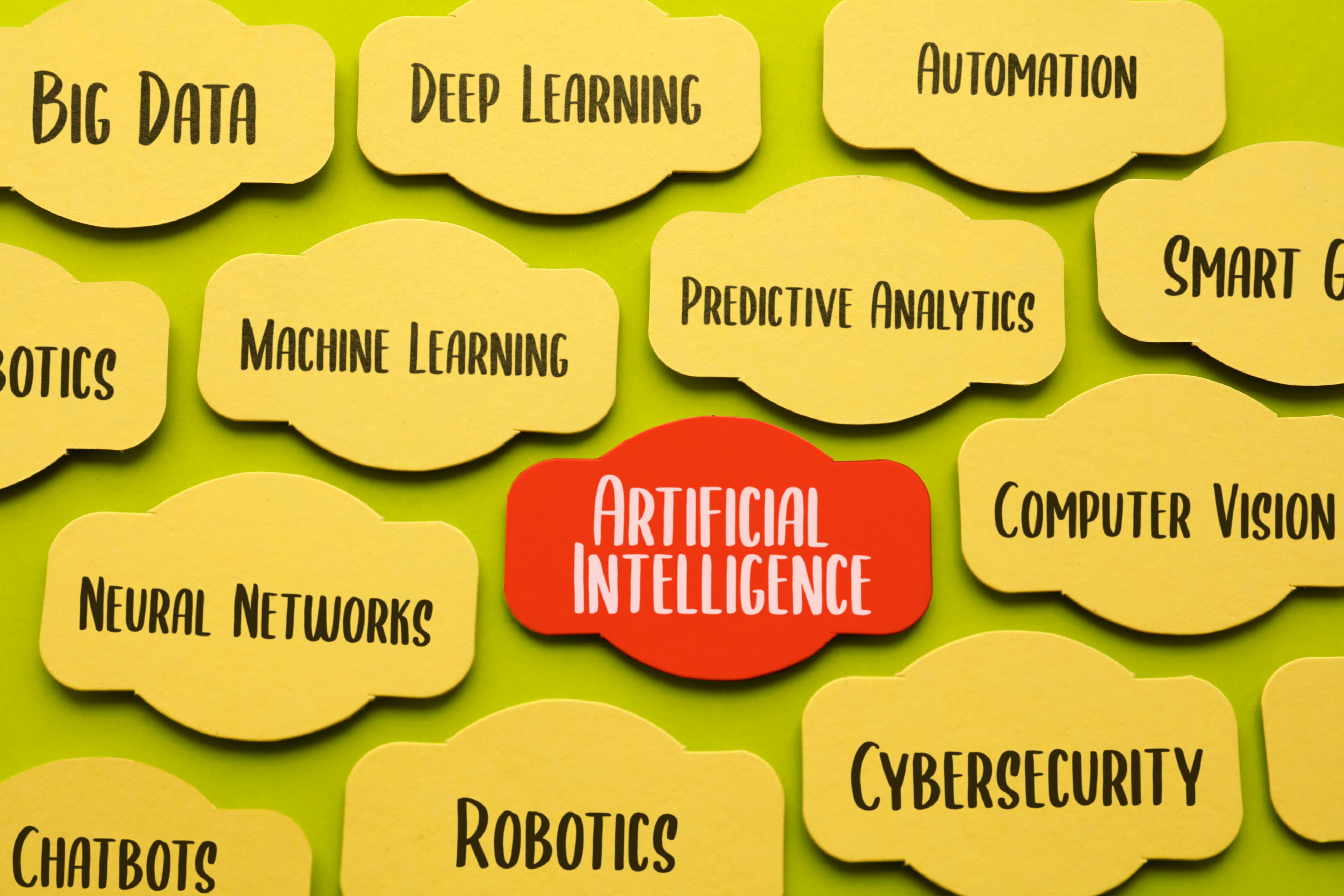When computer software can use data to make an educated decision, the result is increased business productivity. The machine completes certain tasks faster than its human counterparts ever could, and people can direct their attention to all of the important work that machines can’t do. For example, improving customer relationships rather than spending time on data entry. Therefore, using machine learning and artificial intelligence has a huge, time-saving value for every company.
Artificial intelligence and machine learning are not the same
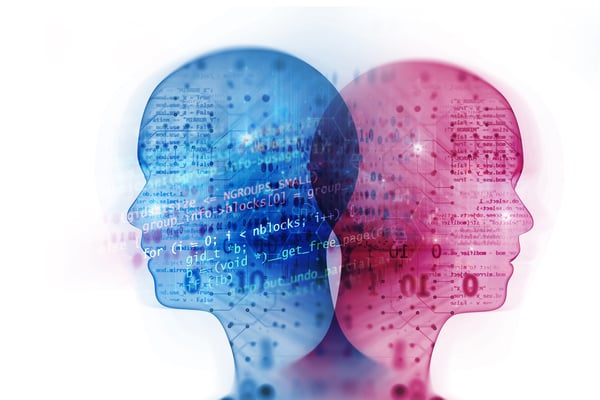
Artificial intelligence (AI) and machine learning (ML) are big buzzy terms making more noise now than ever. Even though these words are used interchangeably, they aren't the same. To appreciate the true potential value of both, it is important to know how they differ.
Artificial intelligence is a blanket term that represents any type of technology that addresses complex issues and simulates the human brain’s problem-solving ability. It performs tasks commonly associated with human intelligence and was developed to generalize, reason, uncover meaning and learn from mistakes.
Machine learning, on the other hand, is a subset of AI technology. ML software takes in and learns new information automatically based on patterns it identifies. It analyzes data then uses this “knowledge” to make the correct decision, thus eliminating or minimizing human intervention. Because the machine is learning independently, no additional programming is needed.
Businesses create and receive data from multiple sources and must find the best way to use it. This is where machine learning comes in -- it crunches the data, allowing for the identification of patterns, red flags and trends so that executives and managers can plan correctly and determine the most efficient way to operate moving forward.
Where does big data come into play? 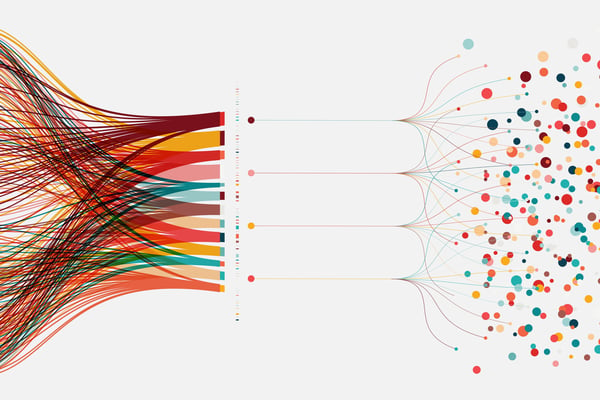
Big data is another popular term but what exactly is it? TechTarget defines it as a combination of structured (like contracts and financial records), semi-structured (like emails and XML) and unstructured data (like open-ended survey questions and multimedia files) that can be used in machine learning, predictive modeling and other analytics applications. It’s characterized by its large volume, wide variety of data types and the speed at which it’s produced.
But even if your business doesn’t deal with big data, ML technology can still help by transforming manually heavy processes into lighter ones resulting in less manual, routine work for employees, better customer experience and other benefits. For example, we all love those online forms that predict what we are going to type next and automatically fill in information that’s needed. What a time-saving luxury it is not to have to punch the same keys over and over and over -- not to mention the reduction in human error.
Classifying, routing and archiving documents without human touch
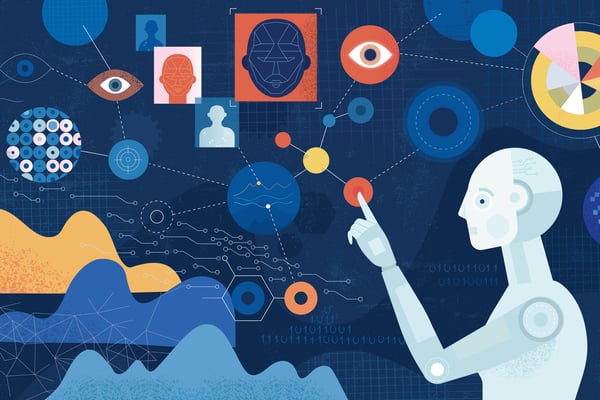
Machine learning makes knowledge-based decisions based on previous behavior and the new data it reads. This is a perfect example of technology at work for the business, its employees and customers. DocuWare Intelligent Indexing, our autoindexing solution, provides a case in point. It extracts information like sender, recipient, amount, creation date, and other standard items from a document. It recognizes these data fields correctly whether they appear in the same place on a document type or not. For example, although each vendor structures their invoices differently it recognizes where the pertinent information is on each one.
The software uses “few exemplar learning” which trains it with very few (usually 1-3) examples. So, its automated capabilities become highly accurate very quickly. This is a big advantage; the user does not need much sample data to “teach” the software to become precise and almost no configuration is required.
You’ll also find the use of ML technology in companies such as Duolingo where machine learning has become a part of everything the company does. While the app teaches users how to speak a foreign language, users are simultaneously teaching the app to be a better instructor. A human teacher can improve by working with one class at a time. But Duolingo software gets better by teaching tens of millions of people.
Training robots to choose and put objects in the right place through repetition and feedback is one of ML’s many other uses. It enables robotic systems to adapt to their work environments and participate in workflows without complex programming.
How you already use AI

AI functionality isn’t always obvious to the user. For example, language detection is another behind-the scenes feature in DocuWare. When a user uploads a document, AI compares it to the 70 languages DocuWare supports, and determines which language it is written in. This is done by an AI model trained on publicly available language data.
Spam filters that separate out unsolicited and potentially dangerous emails and send them to spam or trash folders are commonplace and enable us to focus on emails we want to receive.
Chatbots are an artificial intelligence system that uses natural language processing capabilities to carry on a digital conversation. The most obvious examples of chatbots are Apple's Siri, Microsoft's Cortana and Amazon's Alexa. In addition, many websites now feature chatbots that can answer technical support questions, help guide customers through a sales process or interact in other ways.
Generative AI is another aspect of artificial intelligence that has come to the forefront of the AI scene. It not only “understands” data, and makes smart decisions based on it -- it produces new content. Some of the most prominent examples are ChatGPT which creates text in response to text prompts and similar products like BLOOM, Flamingo and Jasper. ChatGPT’s developer OpenAI recently released a new version that can also communicate by using spoken words. DALL-E, which synthesizes images from text descriptions, is in competition with Midjourney, Deep Dream Generator and Big Sleep. Text-to-speech synthesis is continuing to improve as well with better quality artificial readers for ebooks, news clips and advertising.
Using AI to sell smarter

When used correctly, artificial intelligence provides us with a deeper understanding of our customers even across different contexts and channels. AI can predict the product a customer is going to buy before they buy it. We all encounter this when we order something on Amazon. It is undeniably handy when the website “recommends” items to add to our cart. Every business owner with a product to sell should be using AI in this way.
Let’s take this one step further. AI has the capability to read signals and sense each customer’s unique intent to purchase, upgrade or cancel. Powered by real-time data, AI can even guide customer service and sales representatives to make the right offer at the right time. The human touch paired with human intelligence and powered by AI is a kind of technological magic that will help your company understand your customers better and help personalize their experience in Amazon-like fashion.
AI can help to retain top talent
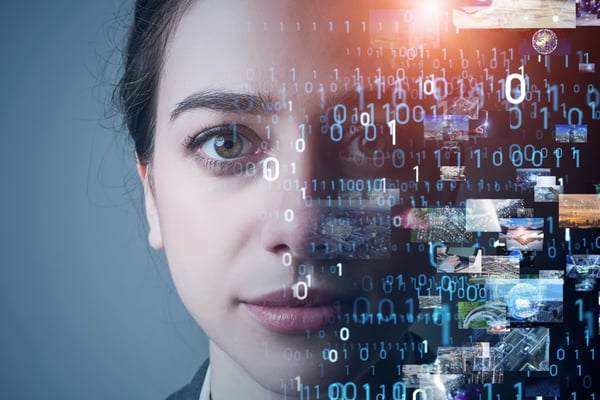
Employee retention is also a key where AI can help businesses thrive. HR professionals can use this technology to help them see who is planning on leaving their job. Companies such as IBM are using this knowledge to get in front of valued employees and negotiate, counteroffer and retain their services. Using technology to analyze the data points and determine who is a flight risk saves every business valuable time and money.
Using machine learning to transform a manual data entry process or drive automated workflows or another aspect of AI to accurately predict a sale or retain a valued member of a team makes up what can offer the most return on investment when investing in this technology. As AI and machine learning innovations continue to develop at lightning speed, their contributions to your business success promise to increase exponentially.
10 terms you should know
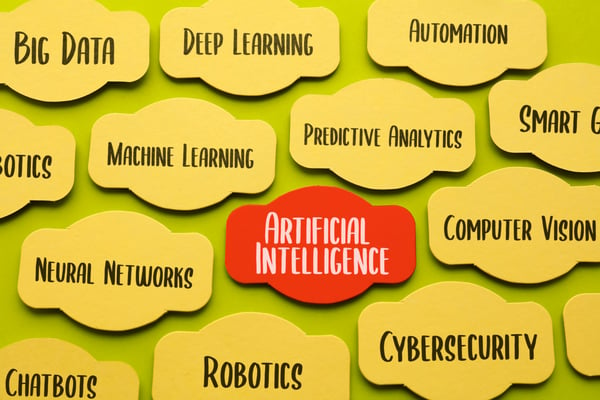
- An algorithm: is a sequence of rules given to an AI machine to enable it to perform a task or solve a problem. Common algorithms are used for classification, regression, and clustering.
- Deep Learning: is a subset of machine learning that focuses on forming abstract concepts. Deep learning systems process large quantities of data and generalize categories and features related to that data through supervised or unsupervised learning. Instead of relying on an algorithm, this subset of machine learning can learn from unstructured data without supervision.
- Supervised learning: is another machine learning model. The computer has a human “teacher” who provides sample inputs and outputs. The machine learns by comparing their output to the “correct” output.
- Unsupervised learning: does not involve sample data. Instead, the system is asked to find patterns in the data on its own. It learns by the process of trial and error. For example, this technique is useful when looking for hidden insights in big data.
- Structured data: is organized into a format or fields, as it is in a spreadsheet or database.
- Unstructured data: is not organized into any particular format. Examples of unstructured data include photos, videos, emails, books, social media posts, or health records.
- Semi-structured data: does not live in a database or spreadsheet but may have some attributes that make it easier to organize. Examples include XML data and NoSQL databases.
- Data mining: looks for patterns in a dataset. It identifies correlations and trends that might otherwise go unnoticed. For example, if a data mining application were given to a retail clothing company, it might discover that people in the South prefer colors and patterns. Or a chain of coffee shops might confirm that people will buy anything with "pumpkin spice" in the product name during the month of October.
- A neural network: is a computer system modeled on the human brain. It uses nodes that are like biological neurons and perform tasks that include computer vision, speech recognition, and board-game strategy. A network of firing “neurons” interprets data, makes decisions and learns from the input over time.
- Natural Language processing (NLP): understands and generates speech the way humans usually use it. Computers have always been able to understand programming languages, but applying these principles to human speech is much more complicated.

